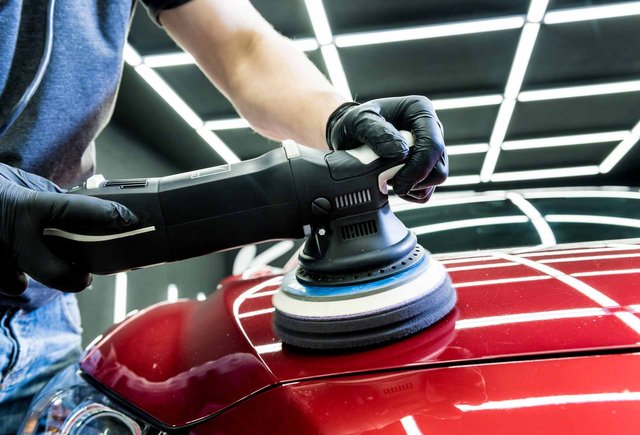8 Paint Correction Facts You Need to Know

Are you passionate about keeping your car looking fresh and new? Then paint correction might be exactly what you need. This guide will take you through everything you need to know about paint correction, from the process to its costs and maintenance tips. By the end, you'll understand why this service is popular among car enthusiasts and if it's the right choice for your vehicle.
1. What is paint correction?
Paint correction is a detailing process that removes imperfections from a car’s paint surface, such as swirl marks, scratches, oxidation, and other minor defects. This process restores the original paint’s clarity and gloss, making the car look like it just rolled off the showroom floor. Unlike a simple polish, paint correction involves a multi-step process to ensure the best results.
2. Why is paint correction important?
Keeping your car’s paint in good condition is essential not only for its appearance but also for its value. A well-maintained car with a glossy, scratch-free finish stands out and can even fetch a higher price if you decide to sell it. Plus, receiving compliments on your car’s look is always a confidence booster.
3. The paint correction process
The paint correction process involves several steps, each requiring skill and attention to detail. Here's what typically happens:
- Thorough Cleaning: The first step is to wash and decontaminate the car. This removes dirt, grime, tar, and other contaminants that could interfere with the correction process.
- Inspection: After cleaning, the detailer inspects the paint for imperfections. They may use special lights and tools to identify all the scratches, swirl marks, and other defects.
- Paint Measurement: In some cases, the paint’s thickness is measured to ensure there's enough clear coat to work with. This step is crucial to avoid over-polishing, which can damage the paint.
- Polishing: This is the heart of the paint correction process. Using various grades of polishing compounds and pads, the detailer carefully polishes out the imperfections. This step can take several hours to complete, depending on the condition of the paint.
- Finishing: After polishing, a finishing polish is applied to enhance the gloss and clarity of the paint.
Protection: Finally, a protective layer such as wax, sealant, or ceramic coating is applied to protect the newly corrected paint from future damage.
4. Cost of paint correction
The cost of paint correction can vary widely, typically ranging from $500 to $2,500 or more. Several factors influence the price:
- Size and Condition of the Vehicle: Larger vehicles or those with heavily damaged paint require more time and materials.
- Detailer’s Expertise: Experienced detailers with a proven track record often charge more for their services.
- Location: Prices can vary depending on the region and the level of demand for detailing services.
While it might be tempting to search “paint correction near me” and go for the cheapest option, remember that paint correction is all about skill and precision. A lower price might mean less experience or lower-quality materials, which could do more harm than good.
5. How long does paint correction last?
The longevity of paint correction depends on several factors, including how well you maintain your car afterward. Here are three key factors:
- Your Maintenance Routine: Regular washing with gentle products, using microfiber towels, and avoiding harsh chemicals will help maintain the corrected paint.
- Environmental Factors: Exposure to elements like sun, rain, and road debris can affect the paint over time. Parking your car in a garage or using a car cover can help protect it.
- Additional Protection: Applying a ceramic coating or paint protection film can significantly extend the life of your paint correction by providing an extra layer of defense against the elements.
With proper care, a paint correction can last several years. Some car owners never need another correction if they maintain their vehicles well.
6. Is paint correction worth It?
Paint correction is worth it if you value your car’s appearance and want to keep it looking its best. Here are some benefits:
- Enhanced Appearance: Your car will look brand new with a shiny, clear finish.
- Increased Resale Value: A well-maintained car with flawless paint can fetch a higher price.
- Protection: Removing imperfections can help protect the underlying paint from further damage.
7. Paint correction vs. repainting
Some people argue that repainting is a better option than paint correction. However, there are several reasons why paint correction is often the better choice:
- Cost: Repainting is usually more expensive than paint correction. It involves stripping the car down, removing parts, and then painting, which is labor-intensive and costly.
- Original Paint: Keeping the original paint is preferable for many car enthusiasts and can maintain the vehicle's value better than a repaint.
- Risk: Repainting carries the risk of mismatched colors or a finish that doesn’t meet the factory standards.
8. Maintaining your paint after correction
Proper maintenance is crucial to prolong the effects of paint correction. Here are some tips:
- Regular Washing: Wash your car regularly using a gentle car wash soap and microfiber mitts to avoid scratches.
- Avoid Harsh Chemicals: Use pH-neutral products designed for automotive paint.
- Use Protection: Apply wax, sealant, or ceramic coating to protect the paint from UV rays, bird droppings, and other contaminants.
- Park Wisely: Whenever possible, park in a garage or shaded area to protect the paint from the sun and environmental damage.